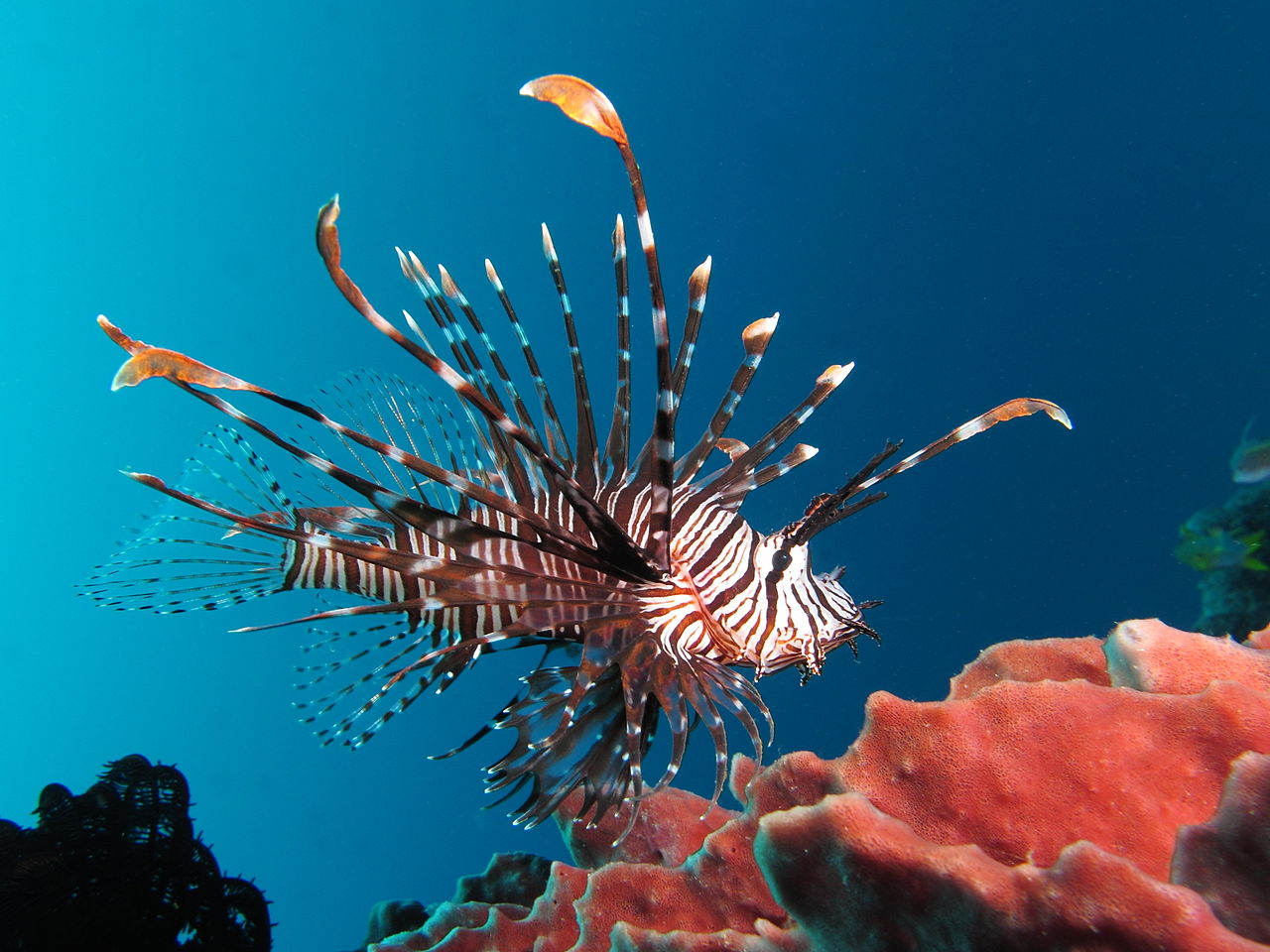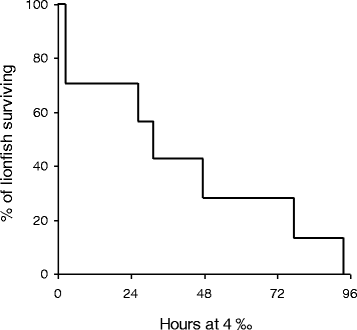The following care2.com article was written by Crystal Shepeard and posted July 13. 2014 with the title above:
Lauren Arrington was in the process of trying to figure out her sixth grade science project when she noticed a lionfish while fishing in the Loxahatchee River in south Florida. Lionfish had been spotted in Florida as early as 2010 and have since spread to many of its waters. Surprised to find it, the 12-year-old wanted to see if a dead lionfish’s spikes would still be venomous. Her father discouraged her from the idea, unwilling to be a human test subject. The daughter of two scientists began to wonder how the lionfish was surviving in the river and decided to do some investigating. The results of her experiment would end up in a science journal and change the way scientists are dealing with a pervasive lionfish invasion in non-native waters.
A native of the Indian and Pacific Oceans, the lionfish is relatively harmless in its natural habitat. Its prey consists of other marine animals in its environment. With a stomach that can expand to 30 times its normal volume, it can consume creatures that are up to half its body size and is only limited to prey that can fit into its mouth. Other species that include the lionfish as part of their diet include sharks, groupers, large eels, and humans. The beauty of the lionfish’s long mane-like spikes makes it a favorite in exotic aquariums and belies their venomous nature.
For decades, however, the lionfish has been on a path of destruction, pushing our earth’s waters to the brink of an ecological disaster. The intentional release of lionfish from home aquariums has put them into non-native waters in the Western Atlantic Ocean, the Gulf of Mexico, the Caribbean Sea, and the Mediterranean Sea. Prolific breeders with the ability to release up to 2 million eggs per year, the lionfish population has increased exponentially in just a few decades. They feed on marine animals that keep coral reefs healthy, as well as their eggs and offspring. Devouring the marine life in their environment is something a lionfish does really, really well. With the help of her father, Lauren captured a few to take home to observe. She was aware of the lionfish invasion and decided to see in what conditions the lionfish could survive. She called her experiment Understanding the Limits of Lionfish Invasion. The hypothesis was that lionfish needed a certain amount of salinity in their environment. Scientists measure water salinity by the amount of salt found in 1000 grams of water. So if there is one gram of salt in 1000 grams of water, the amount of salinity would be expressed as 1 part per thousand, or 1ppt.
The salinity of the area where Lauren found the lionfish is part of the Jupiter inlet that connects to the Atlantic Ocean and averaged the same ocean salinity of 35 parts per thousand. For two weeks, Lauren observed the lionfish’s food intake and stress levels as she reduced the salinity of the water. She believed that because of their natural ocean habitat, it would be unable to survive with a salinity of less than 13 parts per thousand. However, when that level was reached, there was no change in their behavior. She continued to lower the levels until she reached a salinity of 6 ppt. The lionfish survived. Lauren had discovered that lionfish can survive in freshwater.
Her experiment got the attention of researchers at Florida International University and North Carolina State University. Due to the rules of the science fair, Lauren didn’t take the salinity any lower out of fear that the fish would die. Other researchers took the salinity to zero, discovering that the lionfish could tolerate a minimum of 5 parts per 1000 – generally the lowest salinity of most freshwater bodies.
The discovery is significant because scientists have not thought to look for the dangerous predator in freshwater areas until now. This completely human-made threat of the lionfish to ecosystems and commercial fishing is now much greater than previous believed. They can be a threat in the freshwaters where fish nurseries are kept and feed on the eggs and juvenile fish. They could also be feeding on any number of freshwater species not previously known to be in danger. Not to mention, there are no natural predators for the lionfish in any of these areas.
In response, the state of Florida has banned the import of live lionfish into the area as of August 1, 2014. They have also expanded the areas where people can legally spear the lionfish with a permit. Harvesting of the fish is also being allowed as part of the effort to reduce the population. Researchers have also put out an alert to be on the lookout for the fish in previously unexamined waters.
Lauren’s research has since been peer reviewed three times. The results of the expanded study by Dr. Craig Layman, Chancellor’s Faculty Excellence Fellow at North Carolina State University, and Zachary Jud, a graduate student at Florida International University, was published this year in the journal Environmental Biology of Fishes. Lauren’s research was cited and credited with the initial discovery. Not bad for a 12-year-old whose research project earned her third place in a sixth grade science fair.
Excerpt from the expanded study: “The ability of lionfish to survive at low salinities may play an important role in shaping the eventual spatial extent of the invasion in the Western Hemisphere. While lionfish have spread rapidly throughout the Caribbean, Gulf of Mexico, and Northwest Atlantic, they have yet to colonize the coast of South America, south of the Amazon-Orinoco plume (AOP). The AOP has been proposed as a potential barrier to southward dispersal of lionfish (Côté et al. 2013a); however, our findings support the prediction of Luiz et al. (2013) that lionfish will eventually cross the AOP and spread along the Atlantic coast of South America… However, without increased efforts to identify lionfish in other invaded estuaries and document their effect on native estuarine organisms, we may fail to fully recognize the potential impacts of the lionfish invasion on these ecosystems. (Acknowledgement: This project was made possible by a close partnership with the Loxahatchee River District. Lauren Arrington (King’s Academy, West Palm Beach, FL) conducted preliminary laboratory experiments that helped give rise to our experimental design…).”
Editor’s note: Many thanks to Linda Norrington for bringing this material to our attention.
Breaking News: Geography grad student Erin Wetherley contacted the editor on July 23 to point out that “there’s a second act to the lionfish story”: the sixth grader may have stolen credit for a marine biologist’s research – see the story here and futher clarification here.




